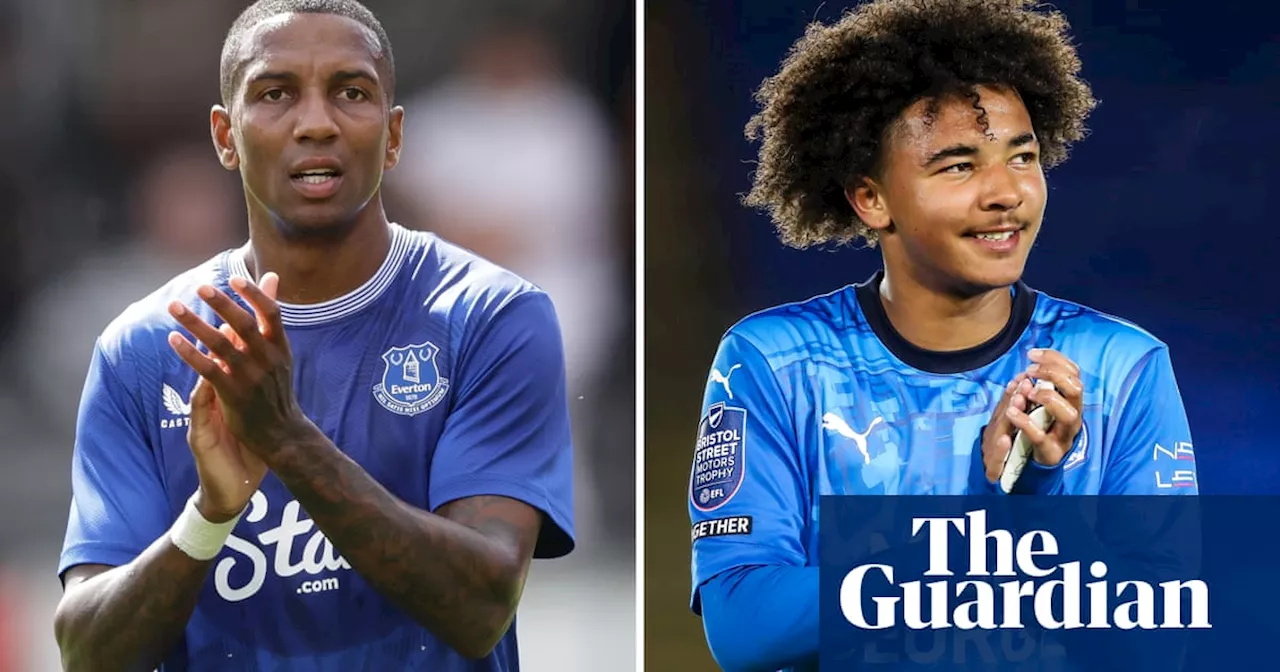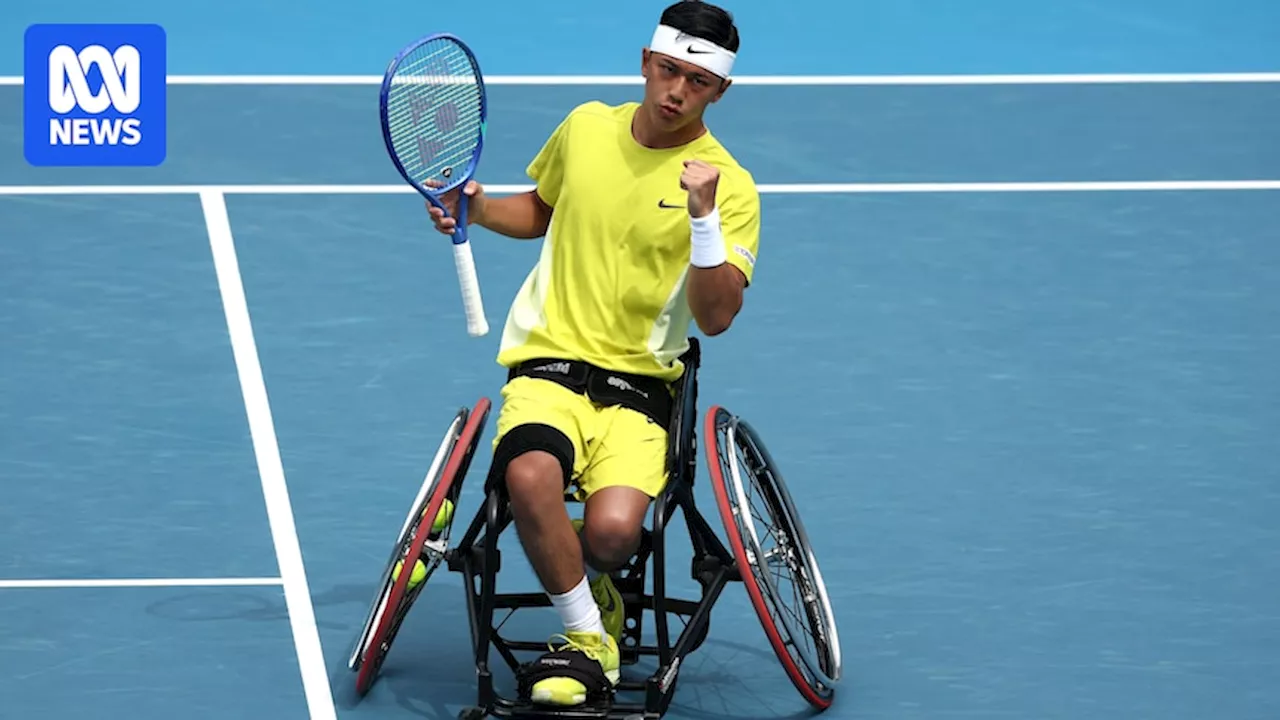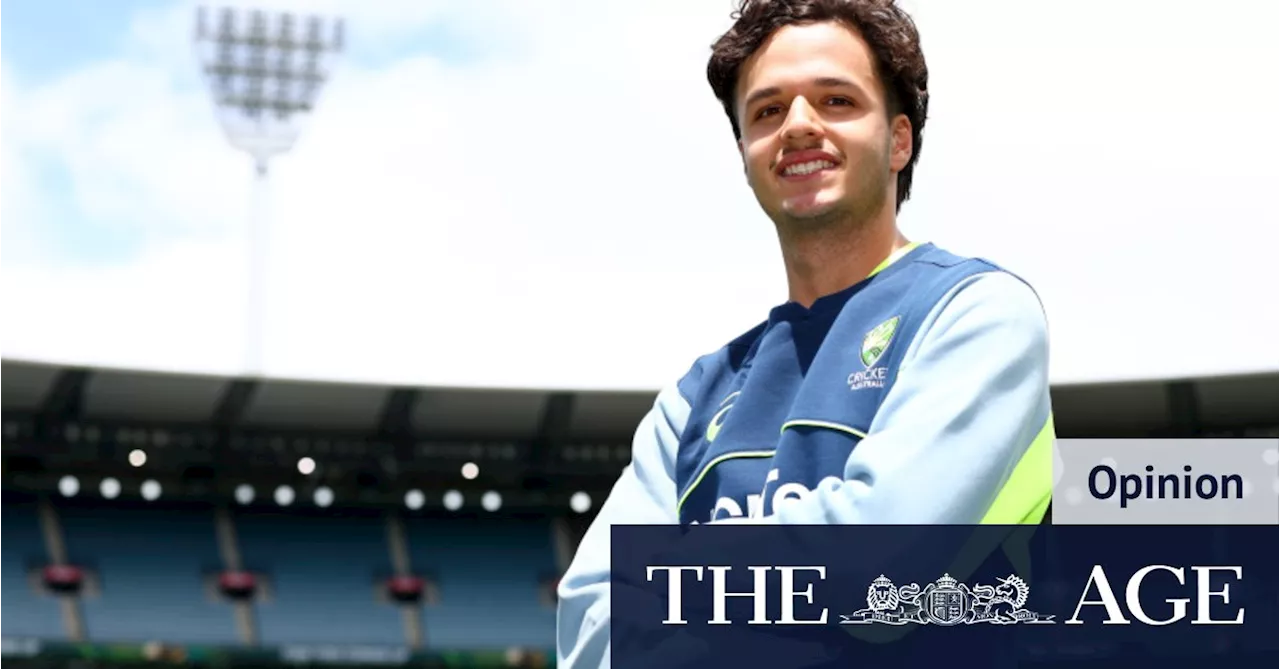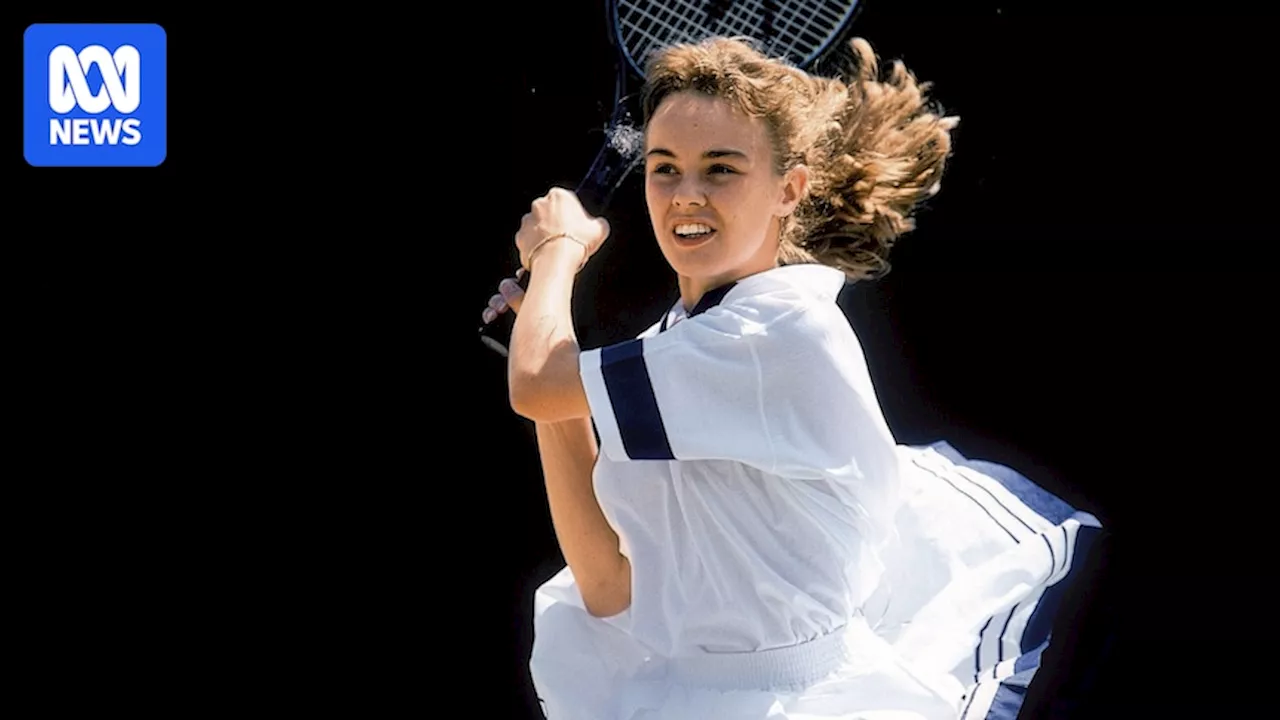This article explores the emergence of promising young tennis players like João Fonseca, Learner Tien, Jakub Menšík, Mirra Andreeva, and Emerson Jones, who are making waves on the grand slam stage. It examines the history of junior grand slam success, highlighting the challenges young players face in transitioning to the professional ranks. The article also discusses the disparity between junior and senior success, using historical examples like Novak Djokovic, Roger Federer, and Rafael Nadal.
Martina Hingis in action at Wimbledon in 1993 during the junior tournament. Hingis was 12 when she won her first junior grand slam tournament. Rafael Nadal and Roger Federer have left Novak Djokovic the last one standing of the 'big three', while the era headlined by the Williams sisters has given way to a new generation of star women.
It's the first time three teenagers have beaten top 10 opponents in a grand slam since the 2006 French Open, with João Fonseca, Learner Tien, and Jakub Menšík all showing their immense potential. On the women's side, Mirra Andreeva has continued her stellar 12 months, with the 17-year-old making the round of 16 before bowing out.Emerson Jones, the 16-year-old world junior number one, is still in the running to win the girls' singles. Jones is the first Australian junior to finish the year as the number one ranked junior since Jelena Dokic in 1998.Cruz Hewitt — son of former Australian world number one Lleyton — has also earned his fair share of media attention this summer as he battled through both the men's and boys' Australian Opens. He bowed out of both events early, but has racked up junior tournament wins over the last 12 months. Despite the rise of the young stars, it isn't always the top end of the junior ranks that dominate in the future. Djokovic, Nadal and Federer combined for just one junior grand slam title — Federer's 1998 victory at Wimbledon. The three most successful women's singles players — Serena Williams, Steffi Graf and Margaret Court — all failed to win a single junior grand slam title.The easiest way for most to track the best emerging talent is at the grand slams. As the main courts are dominated by the stars of today, the outer courts are filled with those with hopes of tomorrow. These young players, usually in their teens, often play in front of sparse crowds. Those who hang around might just see an early sight of the future of the game. It just might not be a future Australian Open winner.The last winner of the junior Australian Open to win the senior title was Victoria Azarenka. The Belarusian took out the girls' singles in 2005 before winning the women's title in 2012. For the men the wait is significantly longer. Stefan Edberg won the boys' singles way back in 1983 before winning the men's title in 1987. The last male junior grand slam winner who won any senior major was Marin Čilić, who won the junior French Open in 2005. Čilić later won the US Open in 2014. Just five of the 183 male junior major winners have gone on to win an adult grand slam title since 1984. The women's game tends to translate junior grand slam success to the senior tournaments a bit more easily. Thirteen of the 133 junior slam winners since 1984 have gone on to win adult grand slams. In 2018, both Coco Gauff and Iga Świątek won junior titles. Since then, both have established themselves at the top of the WTA tour. Winning slams isn't the only measure of success though. There are only a small number of majors each year, with critical points often the difference between a title and going home empty handed.Four of the top 10 men's players in the world have won junior grand slam titles, while three more players ranked 11 to 20 have racked up junior majors.Some junior Grand Slam winners struggle to adapt to the speed and power of top tier tennis. For every Gauff or Federer, there are two or three tales of players battling for years through the lower ranks. A more full view of the performance of juniors paints a better picture of how they adapt in the future.Much like the ATP and WTA tours, the ITF (International Tennis Federation) pulls together junior rankings for those entering the grand slams and other prestigious junior tournaments around the world. The list of year-ending junior number ones is littered with illustrious names, from Roger Federer to Ivan Lendl, Martina Hingis to Victoria Azarenka.Analysis conducted by ABC Sport indicates that only about a third of all elite junior men, and just under half of elite junior women, end up inside the top 100 in the world. The top 100 is an important historical barrier — it has represented when a player can earn a living off tennis.This indicates there's some truth to the fact that quality tends to emerge early — especially in women's tennis. But what about the players that don't hit the top end of the junior rankings? Where do they come from, and how do they rise to the top?Unsurprisingly, junior tennis isn't littered with the riches and rewards of the senior tour. For many players the junior tour is a costly exercise, taking youngsters away from school and support networks in pursuit of a hard to obtain goal. As a result, many young players (and their families) look for the best and quickest possible way to transition to playing on the main tours. Take Cruz's famous dad, Lleyton, as an example. Lleyton Hewitt was the youngest player in the open era to reach the number one ranking in the world at just 20-years-ol
Tennistournaments Junior Tennis ITF Grand Slams Rising Stars Lleyton Hewitt Martina Hingis Coco Gauff Iga Świątek Novak Djokovic Roger Federer Rafael Nadal
Australia Latest News, Australia Headlines
Similar News:You can also read news stories similar to this one that we have collected from other news sources.
 Young v Young: father-son FA Cup meeting could join football folkloreAshley Young may line up against his son Tyler when Everton face Peterborough in the FA Cup on Thursday
Young v Young: father-son FA Cup meeting could join football folkloreAshley Young may line up against his son Tyler when Everton face Peterborough in the FA Cup on Thursday
Read more »
 The rise and rise of Maye Musk: China’s love affair with Elon Musk’s motherThe 76-year-old is part of a trend of ‘silver influencers’ whose success in the face of adversity resonates strongly. Could she be Elon’s secret weapon in China?
The rise and rise of Maye Musk: China’s love affair with Elon Musk’s motherThe 76-year-old is part of a trend of ‘silver influencers’ whose success in the face of adversity resonates strongly. Could she be Elon’s secret weapon in China?
Read more »
 Japan Emerges as Powerhouse of Wheelchair TennisJapan's dominance in wheelchair tennis is on the rise, with young stars Yui Kamiji and Tokito Oda leading the charge.
Japan Emerges as Powerhouse of Wheelchair TennisJapan's dominance in wheelchair tennis is on the rise, with young stars Yui Kamiji and Tokito Oda leading the charge.
Read more »
 Young Gun Sam Konstas Set to Make History as Australia's Youngest Test OpenerAt just 19 years old, Sam Konstas is poised to become the youngest player to open the batting for Australia in a Test match. Konstas's impressive performances in domestic cricket and the under-19 World Cup have earned him this historic opportunity. His calm temperament, ability to score runs consistently, and adaptability across different formats have drawn comparisons to some of Australia's greatest batsmen.
Young Gun Sam Konstas Set to Make History as Australia's Youngest Test OpenerAt just 19 years old, Sam Konstas is poised to become the youngest player to open the batting for Australia in a Test match. Konstas's impressive performances in domestic cricket and the under-19 World Cup have earned him this historic opportunity. His calm temperament, ability to score runs consistently, and adaptability across different formats have drawn comparisons to some of Australia's greatest batsmen.
Read more »
 Young Talent Konstas to Open for Australia in Historic Test DebutAt 19, Sam Konstas will become the youngest Australian to open the batting in a Test match. The selectors believe Konstas's temperament and ability warrant his selection, emphasizing the importance of trusting young talent. Konstas's impressive performances in domestic cricket and the under-19 World Cup have earned him comparisons to some of Australia's greatest batsmen.
Young Talent Konstas to Open for Australia in Historic Test DebutAt 19, Sam Konstas will become the youngest Australian to open the batting in a Test match. The selectors believe Konstas's temperament and ability warrant his selection, emphasizing the importance of trusting young talent. Konstas's impressive performances in domestic cricket and the under-19 World Cup have earned him comparisons to some of Australia's greatest batsmen.
Read more »
 Top Picks for Young Readers in 2024Discover enchanting tales for children, middle-grade, and young adults in our curated list of 2024's best reads. Explore the wonders of Antarctica, the impact of climate change, and the enduring power of language and cultural connection through these captivating stories.
Top Picks for Young Readers in 2024Discover enchanting tales for children, middle-grade, and young adults in our curated list of 2024's best reads. Explore the wonders of Antarctica, the impact of climate change, and the enduring power of language and cultural connection through these captivating stories.
Read more »
